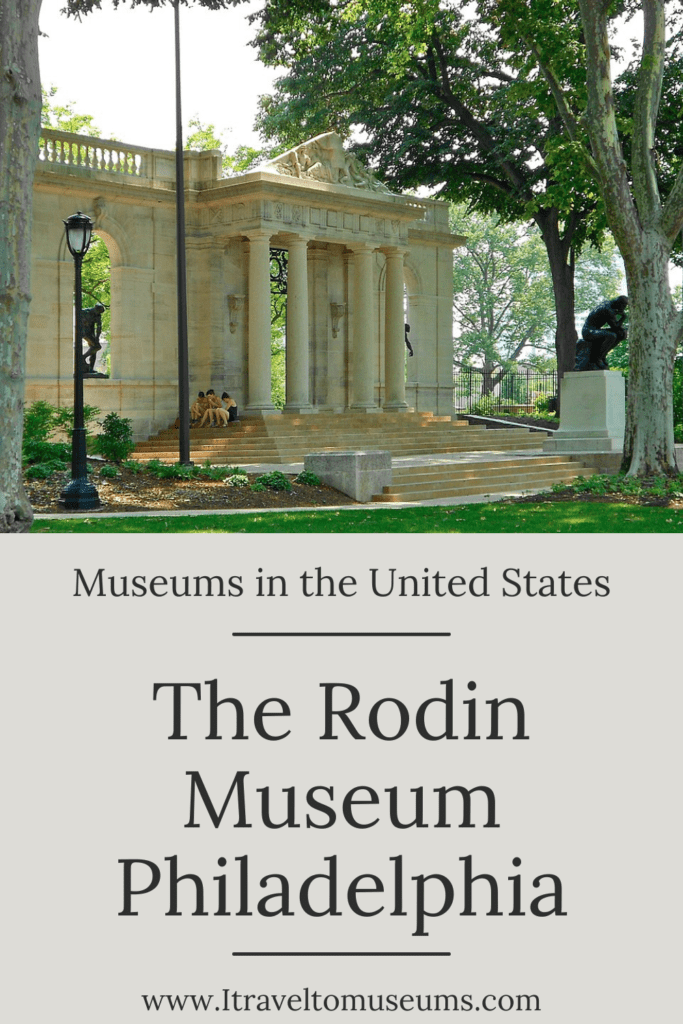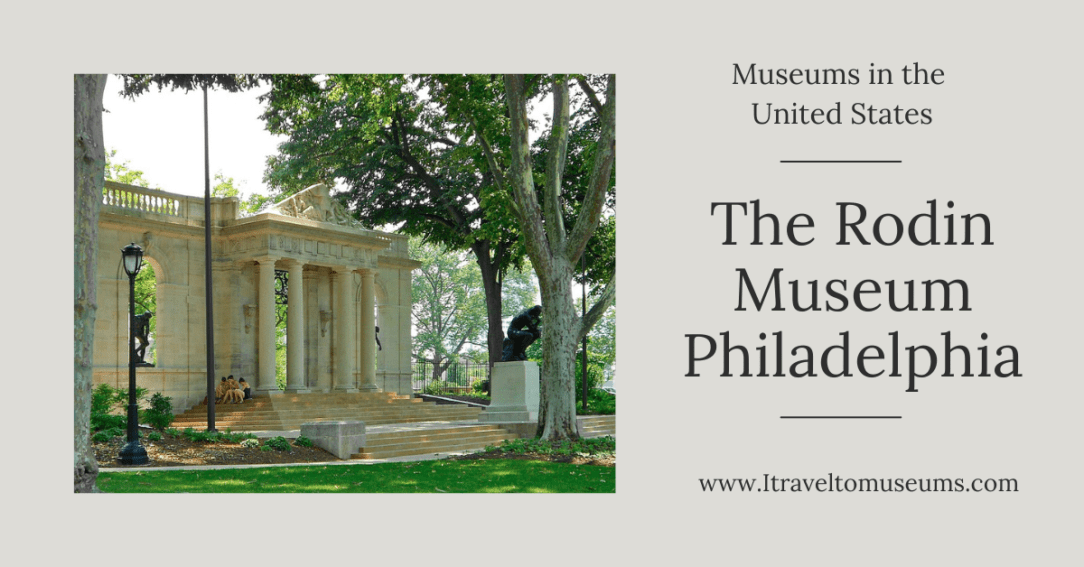
An introduction
Philadelphia is one of the best travel destinations in the United States if you are into history. But what most people are not aware of, is that this city also has a great art scene. With incredible street murals, interesting galleries, and one of the largest art museums in the country, Philadelphia has a lot to offer to all those art lovers in town.
The Philadelphia Museum of Art alone, houses more than 200 000 works of art. It is one of the oldest museums in the United States. It was planned and developed in the 1870s as one of the projects to celebrate the Centennial Exposition in Philadelphia. Its main building is something most locals and tourists recognize as the museum on top of the Rocky steps. The Philadelphia Museum of Art also oversees different annexes and historical houses. One of these is located just a 10 minute walk from the main building down Benjamin Franklin Parkway and is known as the Rodin Museum.
Basic information you need:
Born in Paris in 1840, Auguste Rodin is one of the best artists in history. He is considered by many the father of modern sculpture. He focussed on the study of expression and movement in the human body, and used that as inspiration during his years of activity. He worked mostly on clay and plaster, with some pieces casted in bronze, as well as drawings and sketches. He was particularly fascinated by hands and how expressive they can be.
The Rodin collection in Philadelphia consists of more than 140 pieces that were donated by Jules. E. Mastbaum, a local philanthropist, collector and movie magnate in the 1920’s. He also commissioned the creation of the building to house the collection. This is a beautiful beaux-arts building and garden, designed by French architects Paul Cret and Jacques Gréber in 1926.
Most of Rodin’s works in the world are in private collections, and many of these collections were put together from pieces that were cast in bronze after Rodin’s death in 1917. Mastbaum’s collection was not the exception. It also includes plaster models, marble sculptures, sketches and books that belonged to the artist.
During your visit.
The main access to the museum recreates the portico at Château de Meudon, Rodin’s final resting place in France. Before going through the gate, people can see Rodin’s most famous sculpture, “The Thinker”, which represents Italian poet Dante Alligieri.
Exploring the gardens and the fountain is one of the highlights of this visit. They are open to the public free of charge, and the official museum website describes them as an “oasis in the city”. If you want the perfect picture for Instagram, the gardens are a great location to snap a few shots. This space is also where some of Rodin’s biggest sculptures are located due to their volume.

Take a detour to the left of the main building, and you will find what, in my opinion, is Rodin’s best work, “The Burghers of Calais”. This is a set of 6 sculptures depicting the collective sacrifice of the men who, in 1347, offered the keys to the city of Calais to the English king after a siege that lasted almost one year. These men were wealthy merchants that sacrificed their lives to spare the population of Calais from a devastating death, after their city was invaded.
Centuries later, to commemorate the event, the council of Calais hired Auguste Rodin to make a monument, but this is not the kind of monument that glorifies heroes. In this case, Rodin humanized the characters. He decided not to use a base to make sure the public could appreciate all the detail in the set of 6 sculptures. Looking at their faces, posture and position of their bodies, all the emotions of despair, anguish, fear, humiliation, and sadness are perfectly visible. Rodin was able to communicate human emotion by exaggerating proportions and capturing movement in a masterful way.


The last of the big sculptures before accessing the main building is “The Gates of Hell”. Inspired by poems such as “The Divine Comedy” by Dante Alligieri and “The Flowers of Evil” by Baudelaire. In 1880, Rodin received a commission to create a set of bronze doors for a new museum in Paris. A few years after he received the commission, the project of the museum was canceled. Even after that, Rodin worked on the Gates of Hell for decades, leaving it unfinished when he died. It contains around 200 small sculptures in high and low relief. Some of these eventually became independent sculptures like “The Thinker” or ‘The Kiss”. This is the culmination of Rodin’s modern, expressive style. This bronze casting was made in 1826-28 from the original plaster Rodin left at his death.
Going inside the museum is an interesting experience, especially if you are familiar with collections dedicated to Rodin in other places. Here it feels intimate, like being inside a chapel. Most medium size sculptures are on display in this space. And even though the space seems small, there is a lot to see.
An interesting piece is The Kiss, originally a study of lovers Paolo and Francesca from Dante Alligieri’s poem for the Gates of Hell. Rodin decided not to include it in the final version of his work, instead he presented it as an independent sculpture. The version that Rodin Museum in Philadelphia has on display, is actually a copy beautifully carved in marble by Henri Gréber. Rodin never worked on marble, there are some speculations that he didn’t know how to and he hated it. His medium was plaster and clay that served as molds for casting in bronze.
Another beautiful work is The Cathedral. Rodin was obsessed with the study of the body as an expressive tool, and he had a particular obsession with the study of hands. He was also interested in architecture and, after writing a study on Gothic Cathedral, he renamed this study of two right hands together as The Cathedral, giving it some sort of spiritual meaning.

Things to consider:
Admission to the museum is pay what you wish, but the suggested fee is $12 for adults. Admission to the gardens is free.
Suggested Parking is at the Philadelphia Museum of Art parking garage. There are also parking meters through Benjamin Franklin Parkway.
The museum has a small but charming gift shop. Don’t leave without looking at it.
Other suggestions:
Don’t forget to check the museum’s website for up to date information.
We like to travel using credit card points and hacking, and we will always recommend American Express cards for its amazing customer service.
Our suggestion for a hotel in the area is The Logan Philadelphia, Curio Collection by Hilton, great value for the price. To make a reservation through Expedia, follow this link.

